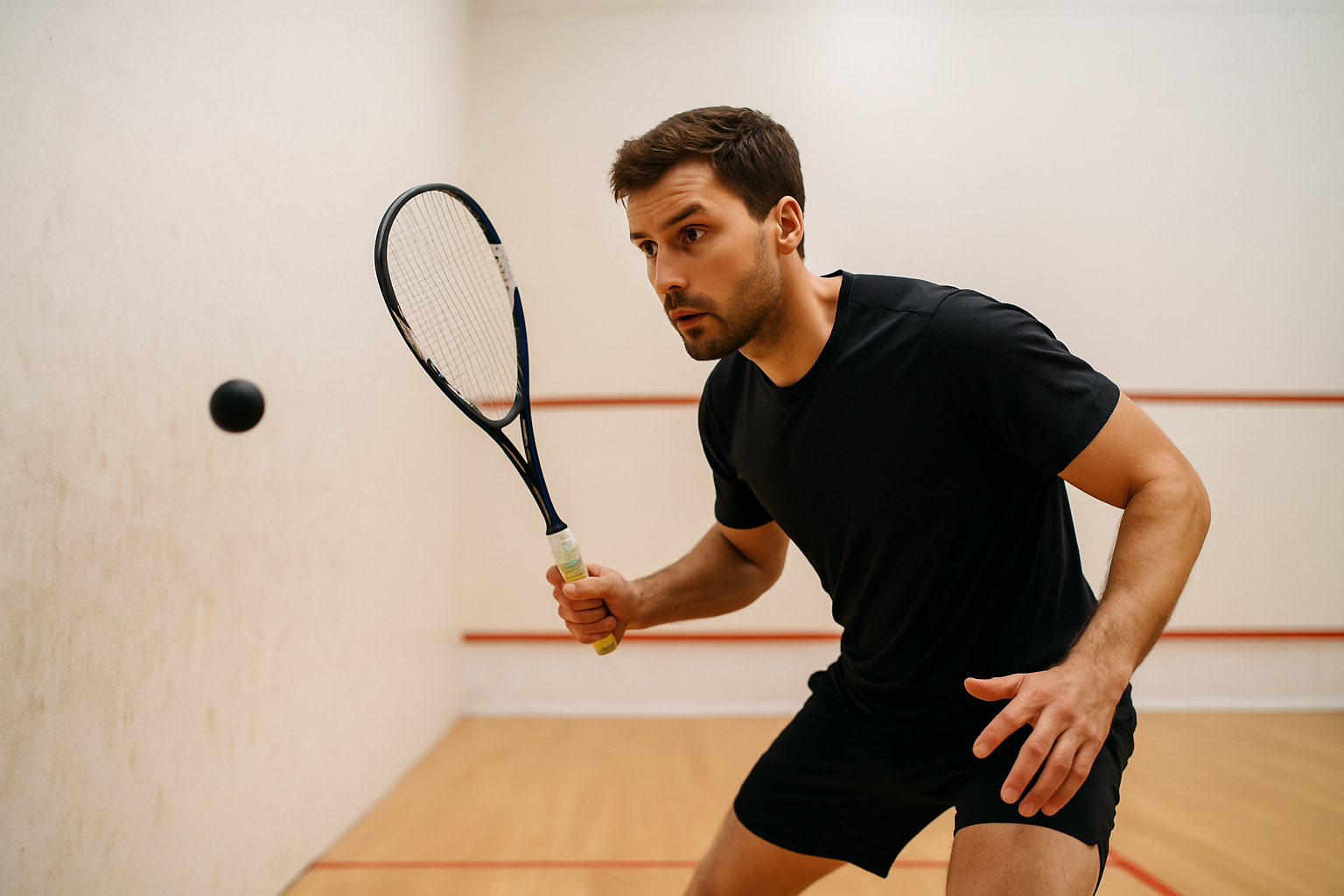Squash: The Tactical Genius of Wall-Based Racquet Sports
Squash, a high-intensity racquet sport played within the confines of an enclosed court, has captivated athletes and enthusiasts for over a century. This dynamic game combines physical prowess, strategic thinking, and lightning-fast reflexes, making it a thrilling spectacle and challenging pursuit. From its humble origins in London's elite schools to its current status as a global competitive sport, squash has evolved into a tactical masterpiece that continues to push the boundaries of human athleticism and mental acuity.

As squash gained traction, it underwent several transformations. The introduction of the harder ball in the 1920s revolutionized gameplay, increasing speed and requiring players to develop new techniques. The standardization of court dimensions and rules in the 1920s and 1930s further solidified squash’s identity as a distinct sport.
Throughout the 20th century, squash expanded globally, with countries like Egypt, Pakistan, and Australia emerging as powerhouses. The sport’s tactical depth and physical demands attracted a diverse array of players, from business executives seeking a quick workout to professional athletes drawn to its competitive nature.
The Art of the Four-Wall Battle
At its core, squash is a battle of wits and physical prowess played out within the confines of four walls. The objective is simple: hit the ball against the front wall above the tin (a metal strip at the bottom) and below the out line, making it difficult for your opponent to return. However, the execution of this seemingly straightforward goal requires a complex interplay of skills, strategy, and split-second decision-making.
The tactical genius of squash lies in its use of space and angles. Players must constantly assess the court, anticipating their opponent’s moves while planning their own. The ability to read the game, predict ball trajectories, and exploit weaknesses in an opponent’s positioning is crucial. This mental chess match, played out at breakneck speeds, sets squash apart from other racquet sports.
One of the most critical tactical elements in squash is controlling the T, the intersection of the half-court line and the short line. Dominating this central position allows players to cover the court more efficiently and react quickly to their opponent’s shots. The battle for the T is a constant struggle, with players using a variety of shots and movements to claim or reclaim this vital territory.
Physical Demands and Athletic Prowess
The physical requirements of squash are nothing short of extraordinary. Players must possess a unique combination of endurance, speed, agility, and strength. During a match, athletes can cover up to four miles in short, explosive bursts, making squash one of the most demanding cardiovascular workouts in sports.
The sport’s intense nature has led to significant advancements in training methodologies. Modern squash players incorporate a wide range of exercises into their regimens, from high-intensity interval training to plyometrics and yoga. This holistic approach to fitness ensures that players can maintain the explosive power and mental focus required throughout long, grueling matches.
Flexibility and core strength are paramount in squash, as players must contort their bodies to reach difficult shots while maintaining balance and control. The ability to generate power from various awkward positions is a hallmark of elite squash players, requiring years of dedicated practice and conditioning.
The Psychology of Squash
Beyond its physical demands, squash is a mental battleground where psychological warfare plays a crucial role. The enclosed nature of the court creates an intense, pressure-cooker environment where players are in constant proximity to their opponents. This closeness amplifies the psychological aspects of the game, making mental fortitude as important as physical skill.
Successful squash players must master the art of maintaining composure under extreme pressure. The ability to stay focused and make split-second decisions while fatigued is a key differentiator at higher levels of play. Mental toughness is cultivated through various techniques, including visualization, mindfulness practices, and cognitive behavioral strategies.
The psychological aspect of squash extends to tactical decision-making as well. Players must constantly adapt their strategies based on their opponent’s strengths, weaknesses, and current form. This requires a high level of emotional intelligence and the ability to read subtle cues in body language and playing style.
Technological Advancements and Equipment Evolution
While squash remains true to its roots, technological advancements have significantly impacted the sport. Modern racquet designs, incorporating materials like carbon fiber and titanium, have increased power and control, allowing players to execute shots that were once impossible. These technological improvements have led to faster gameplay and more dynamic rallies, enhancing the spectator experience.
Ball technology has also evolved, with manufacturers developing balls that maintain consistent bounce and speed under various temperature conditions. This consistency has been crucial in standardizing play across different environments and elevating the sport’s professional status.
Court design has seen innovations as well, with the introduction of all-glass courts revolutionizing the viewing experience for spectators and television audiences. These transparent courts, often set up in iconic locations, have brought squash out of enclosed clubs and into the public eye, showcasing the sport’s athleticism and excitement to a broader audience.
The Global Squash Landscape
Squash’s global footprint has expanded significantly since its inception. The sport is now played in over 185 countries, with professional tours attracting players from diverse backgrounds. Egypt has emerged as a dominant force in recent years, producing a string of world champions and top-ranked players. This shift in the sport’s center of gravity has brought new playing styles and tactics to the forefront, enriching the global squash community.
The push for Olympic inclusion has been a major focus for the squash community. Despite multiple bids, the sport has yet to secure a place in the Olympic program. However, this ongoing campaign has led to increased visibility and investment in squash infrastructure worldwide.
Grassroots initiatives and development programs have played a crucial role in expanding squash’s reach. Organizations like the World Squash Federation and various national bodies have implemented programs to introduce the sport to youth, particularly in underserved communities. These efforts aim to diversify the player base and ensure the sport’s long-term growth and sustainability.
Competitive Formats and Major Tournaments
The professional squash circuit offers a variety of tournament formats, each presenting unique challenges and strategic considerations. The Professional Squash Association (PSA) World Tour features events ranging from small challenger tournaments to major championships, culminating in the prestigious World Championships.
The traditional scoring system in squash, where only the server could score points, has been largely replaced by the point-a-rally (PAR) system. This change has made matches more dynamic and unpredictable, as every rally now has the potential to affect the score. The standard format for professional matches is best of five games to 11 points, creating intense, fast-paced encounters that can swing dramatically based on a few key points.
Major tournaments like the British Open, dubbed the “Wimbledon of Squash,” and the World Championships attract the sport’s elite players and showcase the highest level of skill and strategy. These events often feature innovative presentation formats, such as outdoor courts in iconic locations, further elevating squash’s profile and spectator appeal.
Health Benefits and Accessibility
Squash’s reputation as one of the healthiest sports is well-deserved. The high-intensity nature of the game provides an excellent cardiovascular workout, while the constant changes in direction and body positioning engage a wide range of muscle groups. Regular squash play has been associated with improved heart health, increased bone density, and enhanced cognitive function.
The sport’s accessibility is another key factor in its growing popularity. Unlike many other sports that require large playing areas or extensive equipment, squash can be played in relatively small spaces, making it ideal for urban environments. Many fitness centers and universities now include squash courts, providing easy access for enthusiasts and newcomers alike.
The social aspect of squash also contributes to its appeal. The sport fosters a strong sense of community, with players often forming long-lasting friendships and professional networks. The ability to play at various intensity levels makes squash suitable for a wide range of ages and fitness levels, promoting lifelong participation.
Coaching and Skill Development
The role of coaching in squash cannot be overstated. Expert coaches play a crucial role in developing players’ technical skills, tactical awareness, and mental resilience. The coaching process in squash is highly individualized, focusing on each player’s unique strengths and weaknesses to create a tailored development plan.
Technical skill development in squash is a never-ending process. Players must master a wide array of shots, including drives, drops, lobs, and volleys, each with numerous variations. The ability to disguise shots and create deception is a hallmark of elite players, requiring countless hours of practice and refinement.
Movement training is equally important, with coaches focusing on developing efficient court coverage, explosive changes of direction, and precise footwork. The concept of “ghosting” - practicing movement patterns without a ball - is a fundamental training technique used to ingrain proper positioning and court awareness.
The Future of Squash
As squash continues to evolve, several trends are shaping its future. The integration of data analytics and performance tracking technologies is providing players and coaches with unprecedented insights into gameplay and training effectiveness. This data-driven approach is likely to lead to further refinements in tactics and training methodologies.
Efforts to increase squash’s spectator appeal are ongoing, with experiments in court design, scoring systems, and presentation formats. The potential inclusion of squash in multi-sport events like the Commonwealth Games and Pan American Games could provide a significant boost to the sport’s global profile.
Environmental sustainability is becoming an increasingly important consideration in squash facility design and tournament organization. Energy-efficient court lighting, eco-friendly building materials, and water conservation measures are being implemented to reduce the sport’s environmental footprint.
Conclusion: The Enduring Appeal of Squash
Squash’s unique combination of physical intensity, tactical depth, and mental challenge continues to attract players and spectators worldwide. As the sport evolves, it maintains a delicate balance between tradition and innovation, preserving its core principles while embracing new technologies and ideas.
The tactical genius of squash lies in its ability to constantly challenge players, regardless of their skill level. From the amateur player striving to improve their game to the professional athlete competing on the world stage, squash offers a lifetime of learning and growth opportunities.
As we look to the future, squash’s role in promoting physical fitness, mental acuity, and social connection is more relevant than ever. Whether played for competition, fitness, or pure enjoyment, squash remains a testament to the enduring appeal of strategic, high-intensity sport. Its continued growth and evolution ensure that the four-walled battle will captivate and inspire generations to come, solidifying squash’s place as a true tactical marvel in the world of sports.





